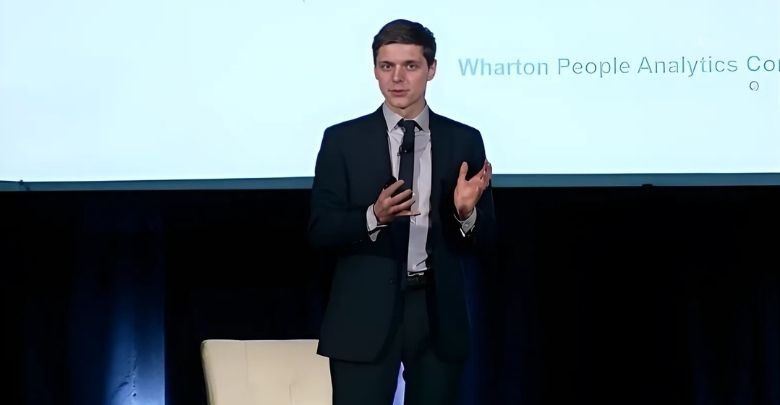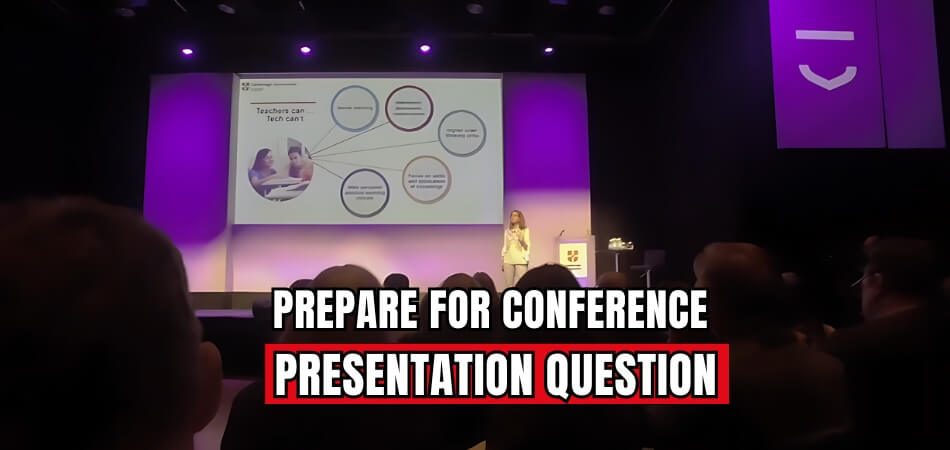Presenting at a conference provides a powerful platform for sharing insights and creating an impact. Many professionals often wonder what makes a presentation successful and impactful, which leads to the question: How do you prepare for a conference presentation question?
To prepare effectively, it is crucial to develop a structured outline, rehearse multiple times, and consider potential audience questions. Practicing with visual aids and ensuring familiarity with the venue will help build confidence. This way, your delivery remains engaging and your message impactful, providing the audience with real value.
If you’re curious about making your conference presentation successful, this article has all the information you need. Dive in to discover the best strategies to make your preparation meaningful and your presentation unforgettable.
The Importance of Conference Presentations
Presenting at conferences is a great way to expand your knowledge and expertise. They let professionals present their latest findings and gain feedback. By attending, individuals stay updated on trends and connect with others in the same field, creating bonds that often lead to collaborative opportunities and innovations that drive progress.

These events are also crucial for networking, especially when joining a notable conference. Attendees can meet industry leaders, learn about the latest trends, and discover potential partners for future projects. Engaging in meaningful conversations can shape one’s career and research direction, offering unique opportunities to grow in the industry.
Additionally, conference presentations provide a unique opportunity for direct learning. Presenters can learn from the audience’s questions, which often offer new perspectives. These sessions foster an environment where participants gain different viewpoints and spark ideas for future projects.
How Do You Find the Right Conference for Your Presentation?
To match your topic with an audience that appreciates your insights, you must carefully consider which conference to present at. The process may seem complex, but the right strategy can make a meaningful difference in your success.
Research Relevant Conferences in Your Field
Identifying conferences that align with your field is the first step. Look for events that attract a similar audience to your research area. Check past agendas and speaker lists to understand their focus, so you can assess if they’re open to your topic. This approach will help ensure your presentation resonates with attendees.
Identify the Audience and Conference Type
Consider the nature of the conference, whether it’s academic, industry-focused, or interdisciplinary. Each type attracts distinct audiences, and matching your content with the interests of attendees is essential. A well-chosen audience means your message will resonate and generate interest, making your presentation impactful.
Acknowledge Submission Guidelines and Deadlines

Analyze Potential Networking Opportunities
The best conferences offer valuable networking prospects beyond presenting your work. Think about who will attend, including potential collaborators, mentors, or even future employers. Presenting in a setting rich in networking opportunities can open doors for meaningful connections, improving your professional trajectory.
Consider Conference Location and Budget
Participating in a conference involves more than just presenting; it includes costs for travel, accommodation, and registration. Weigh these expenses against the benefits of participation. Choosing a conference that fits within your budget and logistical preferences ensures a smoother, stress-free experience.
Finding the right conference is about aligning your work with a suitable event, audience, and environment. This alignment strengthens your presentation’s impact and can enhance your career, especially when submitting a proposal for a conference presentation.
How Do You Prepare for a Conference Presentation Question?
Making preparations for a conference presentation requires more than just gathering information; it demands clear planning and focused practice. An effective approach can enhance your message and create a lasting impression. Here are strategies to prepare.
Develop a Clear Outline of Your Presentation
Organize your key ideas into a clear, logical outline to guide your preparation process. A well-structured outline prevents straying from your main points and ensures a smooth flow. Connecting each point naturally keeps the audience engaged and reinforces your main message, building a cohesive presentation that’s easy to follow and impactful for your listeners.
Practice Delivering With Confidence and Clarity
Effective delivery comes from thorough practice, helping you build both confidence and clarity. Focusing on clear articulation, consistent pacing, and engaging body language improves your presentation. Practicing multiple times, alone or with an audience, helps refine your content and identify the right emphasis points, so your main message remains clear and impactful.
Prepare Potential Audience Questions
Being ready for questions from the audience enables you to confidently handle issues as they come up. By considering likely questions, you can prepare responses in advance, helping you stay composed and ready. Responding effectively to inquiries demonstrates your expertise and establishes credibility with your audience, making your presentation even more engaging and memorable.
Incorporate Visual Elements to Explain Key Points
Using simple, effective visuals like slides, charts, or images enhances key points and maintains audience attention. Avoid cluttered visuals; simplicity and clarity work best. Visual elements should complement your spoken content without overshadowing it, ensuring a harmonious blend that supports your main ideas and keeps the audience focused on your message.
Refine Your Timing and Pacing
Time management is crucial in a conference presentation, ensuring you cover everything without rushing. Practice with a timer, aiming for a steady, comfortable pace and adding brief pauses at essential points. This way, you maintain a balanced pace, ensuring your message is fully delivered and allowing for audience engagement without feeling rushed.
Familiarize Yourself With the Conference Venue
Knowing the layout of the presentation room can help reduce stress on the big day. Arrive early to check technical setups, seating arrangements, and lighting. Familiarity with the room allows you to feel more in control and comfortable, minimizing surprises and ensuring you’re prepared for a smoother presentation experience.
Collect Feedback from a Practice Audience
Practice in front of a small group of people to get insightful feedback on how to make your presentation better. Choose trusted friends or colleagues who can provide constructive insights, noting their suggestions for improvement. This feedback helps you see your presentation from fresh perspectives, allowing for final adjustments that make your presentation stronger and more engaging.
Polish Your Opening and Closing Remarks
Opening and closing remarks set the tone and leave a lasting impression. Begin with an engaging introduction to captivate the audience and end with a memorable statement that reinforces your key message. A strong opening and closing create a complete, impactful experience, making your presentation both engaging and unforgettable
Thorough preparation builds confidence and engages the audience effectively. Following these strategies ensures that you deliver a successful conference presentation while making a memorable impact on your listeners.
What to Do if You Forget Your Lines During a Presentation?
It can be extremely terrifying to forget your lines during a presentation. No matter how experienced they are, a lot of speakers experience it. Staying calm and having a plan can help you recover gracefully and continue engaging your audience.
- Pause and Breathe: Taking a moment to pause allows you to collect your thoughts. Deep breaths help calm your nerves and give you a moment to regain focus, ensuring you continue confidently.
- Use Your Notes: If you have notes, refer to them discreetly. This will remind you of your main points without losing the audience’s attention. Using notes can help you get back on track quickly.
- Rephrase What You Remember: If you recall parts of your message, rephrasing what you remember keeps the presentation flowing. This tactic can buy you time to recollect the missing lines while maintaining audience engagement.
- Engage the Audience: Asking a rhetorical question or prompting a brief discussion can be helpful. Engaging the audience provides you with time to regroup while also making them feel involved in your presentation.
- Summarize Key Points: When lines are forgotten, summarizing the key points you’ve covered reinforces your message. It shows your grasp of the subject and can help jog your memory for the lines you forgot.
- Stay Confident and Composed: Maintaining a confident demeanor is vital. If you project confidence, your audience is less likely to notice any slips. Keeping your composure demonstrates professionalism, even during unexpected moments.
- Practice Recovery Techniques: Rehearsing techniques for handling memory lapses beforehand can help ease anxiety. Familiarizing yourself with these methods prepares you to respond effectively, allowing for a smoother recovery during the actual presentation.
Forgetting lines can be challenging, but with the right strategies in place, you can navigate the situation smoothly. Remaining calm and focused enables you to regain your flow and continue delivering a memorable presentation.
Tips for Making the Most of Your Conference Presentation
Making the most of a conference presentation requires a blend of preparation, audience connection, and engagement. Effective techniques can maximize the impact of your presentation and ensure your message is well-received by everyone attending. Let’s explore some helpful tips.
Know Your Audience in Advance
It is essential to understand your audience in order to customize your content to suit their interests. Research who will be attending, what they value, and their familiarity with your topic. This way, you can adapt your presentation to provide the most relevant and valuable information, making it engaging for those listening.
Prepare a Memorable Opening and Closing
Begin with a powerful statement that grabs attention and sets the tone for your presentation. End with a clear, strong closing that reinforces your key message. An engaging opening draws your audience in, while a memorable ending leaves them with something impactful to think about.
Encourage Audience Interaction
Creating an appealing conference presentation requires interaction. Incorporate opportunities for participants to share their thoughts or feedback. This could include moments for asking questions during a conference presentation to promote an interactive environment, helping participants feel more connected to your topic and presentation.
Use Visual Elements Effectively
Charts and pictures are examples of visual aids that help you illustrate your main points. Avoid overcrowding slides with too much text; instead, use visuals to complement what you are saying. Keeping slides simple and visually appealing ensures that your audience follows your message without feeling overwhelmed.
Practice Your Delivery
Rehearse multiple times to ensure smooth delivery. Practicing will help with pacing, confidence, and clarity. The more familiar you are with your material, the easier it will be to stay focused and adapt as needed. Confidence in your presentation also reflects positively on your audience.
Making the most of your conference presentation involves careful preparation, effective engagement, and deliberate practice. By focusing on audience interaction, you make your message resonate and create an impactful experience for your listeners.
Frequently Asked Questions (FAQs)
Preparing for a conference presentation can be an exciting yet challenging task. Below, we’ve compiled some frequently asked questions to help you manage the preparation process more smoothly. These FAQs cover additional aspects of conference preparation that you may find helpful for your next presentation.
What Should I Wear for a Conference Presentation?
Dressing professionally is essential for creating a positive first impression. Choose attire that aligns with the event’s formality. Business attire, such as a suit or blazer, typically works well. Neutral colors are safe choices. Additionally, comfort is crucial, as you may spend extended hours presenting and interacting with attendees.
How Can I Manage Pre-Presentation Anxiety?
Managing anxiety involves practicing relaxation techniques, like deep breathing or visualization, before presenting. Practicing your content until you’re comfortable also helps reduce anxiety. Arriving early at the venue gives you time to settle in, check equipment, and familiarize yourself with the environment, which will make you feel more at ease.
Should I Use Handouts During My Presentation?
Handouts can be helpful for sharing detailed information, allowing the audience to follow along or review afterward. It’s best to distribute them at the end of your presentation to avoid distractions. Ensure that your handouts contain key takeaways or additional resources that can help your audience better understand your topic.
How Do I Keep the Audience Engaged Throughout My Presentation?
Audience engagement is maintained through eye contact, asking interactive questions, and moving naturally on stage. Using relatable examples and incorporating stories makes your message more compelling. Including visuals like slides or charts can further enhance attention, ensuring your audience remains interested throughout the entire presentation.
How Do I Handle Technical Issues During a Presentation?
Technical issues can happen, so it’s important to remain calm and have a backup plan. Keep printed notes in case your visual aids fail, and familiarize yourself with operating the equipment beforehand. Being prepared for potential problems allows you to continue seamlessly, demonstrating your professionalism to the audience.
End Note
Successfully preparing for a conference presentation involves thorough planning, practice, and audience engagement. By focusing on structuring your content, practicing delivery, and anticipating audience questions, you’ll feel more prepared and confident. These steps answer the question: How do you prepare for a conference presentation question?
Keep a calm attitude, use engaging visuals, and connect with your audience throughout your presentation. Each detail counts when it comes to making an impact. With these strategies in mind, we wish you the best of luck in delivering a meaningful and memorable conference presentation.






